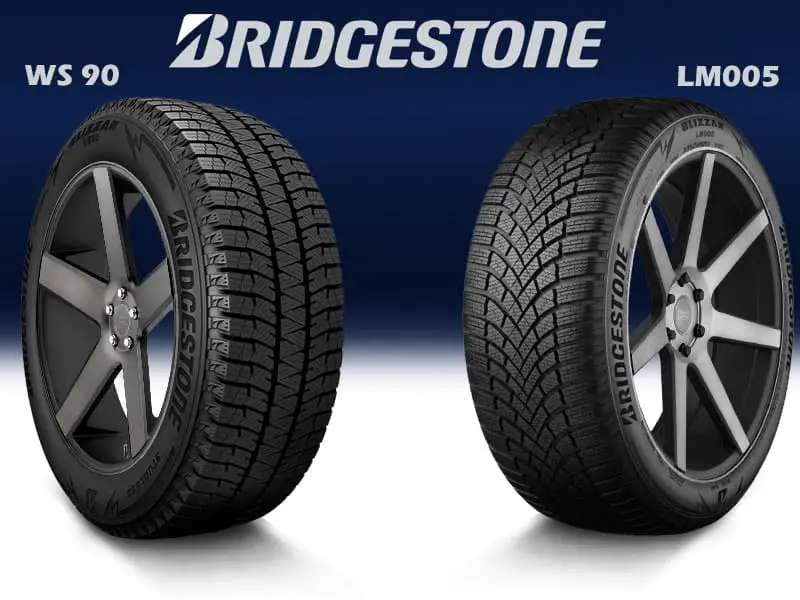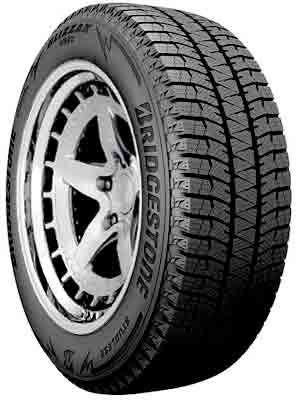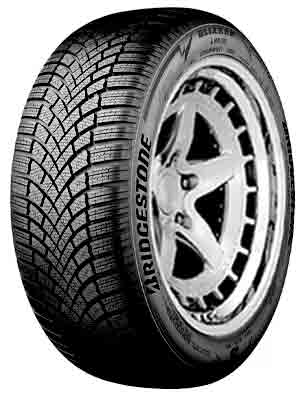Bridgestone Blizzak WS90 and Bridgestone Blizzak LM005 are both winter tires built from flexible anti-freeze rubber to stay functional even in minus temperatures.
Blizzak WS90 shows an up-to-the-mark performance on dry road and provides good traction on snow as well. Whereas the Blizzak LM005 provides a superior experience while rolling in snowy lanes and offers excellent hydroplaning resistivity on slippery tracks.

Let’s analyze their tread pattern.
Side Note: It was intresting to see, how these tires performed against Michelin X ice.
Table of Contents
Comparing Blizzak WS90 with LM005
Bridgestone Blizzak Ws90

Bridgestone Blizzak LM005


Vs

The Bridgestone Blizzak WS90 possesses a continuous, crisscross rib with zero lateral spacing at the center of its symmetrical tread, two linear grooves are located along its sides and traction notches over edges of shoulder blocks which results in a disjointed groove on both shoulders, moreover, zigzag sipes are present over its lugs. It has a larger contact patch due to continuous central rib and low void ratio, leading to a stronger grip on a dry road. On a wet road, its zigzag sipes and grooves account for hydroplaning resistivity as water can squirm out through these spaces yet it stands behind in the competition because it has half the number of grooves and its sipes are less wide as well. High contact patch and decent sipes allow good traction on ice. Its grooves offer optimum snow traction as they have a good ability to evacuate soft snow through the tread, however, their relatively smaller number makes them lose the competition.
Tread of LM005 characterizes a symmetrical and directional pattern with small box-shaped blocks, four circumferential as well as many lateral grooves, and broad, multidirectional, zigzag sipes. Smaller lugs and higher void ratio decrease the contact patch of tread which eventually results in lesser dry traction. On the other side, numerous voids and wider sipes quickly wipe off water and account for efficient resistivity against aquaplaning, leading to superior traction on wet pavement. On the ice, its lower contact patch results in lower traction, despite having good sipes. Its high void ratio in comparison results as better evacuation and biting capacity over soft snow, leading to superior snow traction.
Road Grip Comparison
WS90 has a higher contact patch because the number of longitudinal grooves on its tread is comparatively lesser and its central rib also does not have any lateral voids instead it continues circumferentially, displaying a crisscross design. When more surface area of tread relates to the ground, it can grip more strongly over the surface, leading to better dry traction. However, on the wet road, it shows less aquaplaning resistivity as sipes over its blocks are less deep and it has relatively fewer narrow grooves as well, both elements are responsible for wiping the water away from the surface. The ice is confidently navigated by this tire due to its higher contact patch. Its void show good biting ability on snow as they provide space for the evacuation of snow from the tread, however, a lesser number of voids makes its capability to grip over snow minor than its competitor.
LM005 has double the number of circumferential grooves than its competitor and spacing is present in its central blocks as well, relative abundance of voids reduces its contact patch markedly and its tread grips on dry surface relatively less firmly than its competitor. Conversely, it becomes the winner while rolling over the wet road because its wide, multidirectional, zigzag sipes along with lateral as well as vertical channels wipe water efficiently from the surface and minimize the risk of slipping off, leading to a firm wet grip. On the ice, the grip of this tire lacks due to the lower contact patch. When moving through snowy areas, it has a superior ability to evacuate snow in a backward direction as its tread has more voids as compared to its competitor.
Handling Comparison
When a vehicle with WS90 takes the turn on a dry road, the tire’s shoulders take the load very efficiently and offer well-commanded steer management. Its shoulder lugs have larger contact patches and traction notches over blocks’ edges which result in stable traction during cornering over dry roads. On the other side, its wide blocks decrease the width of lateral grooves, and sipes over shoulder lugs are also relatively shallower, as a result, reduced efficiency to remove water leads to less established steer handling over wet roads. While turning along a corner on a snow-covered road, WS90 offers a better experience as its lateral grooves are deeper than its competitor and contribute supreme snow evacuation but its ice traction is reduced even with a higher contact patch of its shoulder since it has a lesser number of sipes
LM005 offers lesser stability while steering along with tricky turns on the dry road as it has relatively smaller shoulder lugs and tread finds it difficult to maintain grip with minimal contact patch. However, a high void ratio of shoulders provides an advantage in the form of great hydroplaning resistance, which is further enhanced due to wide sipes, as a result, it shows superior steer handling on a wet surface. It offers satisfactory handling upon turning about the corner over the snowy path as its channels have good evacuation and biting capacity on soft snow, however, it stands behind in the competition due to lesser depth of grooves. On the other hand, its ice handling is excellent due to the higher number of sipes on its shoulder blocks.
Comparison of Hydroplaning Resistance
Although WS90 has deep grooves and zigzag sipes over its tread which wipe off the water over wet surfaces and provide reliable aquaplaning resistivity, yet its performance is lesser in comparison as not only it has fewer grooves but also its sipes are less deeper.
LM005 shows wonderful resistivity against hydroplaning due to its high void ratio and prominent siping pattern. Its wide sipes and voids remove water efficiently and reduce the chances of slipping off over slippery pavements.
Comparison of Rolling Resistance
WS90 needs more energy while rolling as its larger contact patch results in greater friction. Consequently, more fuel is consumed to compensate for the hysteresis (energy loss) produced.
A high void ratio helps LM005 in rolling smoothly over the pavement. It encounters relatively low resistance while moving because less surface area of its tread is in direct contact with the surface and less hysteresis is produced. Due to this reason, it shows a better fuel average in comparison.
Comfort and Noise Comparison
Although WS90 has a low void ratio yet it makes more noise in comparison because the increased depth of its grooves offers more space for air particles to trap, and their linear design does not cause any cancellation of sound waves. More comfort on a dry road is credited to superior traction provided by a larger contact patch while decreased comfort on a wet road is due to lesser slip resistance presented by fewer grooves.
LM005 offers a quieter ride as compared to its competitor because the blocks over its tread are designed to create a V-shaped pattern, resultantly its grooves are oriented such that sound waves cancel each other. Moreover, lesser space is offered for the entrapment of air particles due to comparatively lesser depth of voids. Less dry traction due to decreased contact patch makes it less comfortable on a dry road, however, superior resistivity against hydroplaning due to a high void ratio leads to more comfort on a wet.
Durability and tread wear
Both tires are offered in the Blizzak winter tire series by Bridgestone; hence, a similar tread composition is used for their construction. Their treads have a dual compound structure in which the upper layer (55%) is made from NanoPro tech Multicell compound which contains silica enhancements, microscopic bite particles, and hydrophilic coating to enhance ice and snow traction while the lower layer (45%) is molded out from Bridgestone’s standard winter tire compound. After the upper layer is consumed, a built-in indicator points out that more than half of the tread is worn now.
By analyzing tread design we can infer that WS90 is comparatively less durable due to its low void ratio. Its contact patch is higher due to which it encounters more friction while rolling over the road, as a result, its tread wears down more quickly.
LM005 lasts for a relatively long time because of its open tread. It faces lower rolling resistance owing to its high void ratio and directional tread pattern, hence it is consumed slowly against friction.
Price
LM005 is priced a bit higher than its competitor but the few extra bucks are well justified by its supreme traction on a frozen icy track, better fuel average, and slower tread wear. On the other side, you can have more trust on a winter trip over the dry road, spending lesser money by opting for WS90.
Quick Summary
- Bridgestone Blizzak WS90 and Bridgestone Blizzak LM005 are both winter tires.
- WS90 shows better grip and handling ability on a dry road.
- LM005 has superior aquaplaning resistance and offers better traction on wet and icy pavement.
- WS90 makes more noise and experiences more rolling resistance.
- LM005 is priced comparatively higher but it owns the economic benefit of fuel efficiency and longer tread life.


